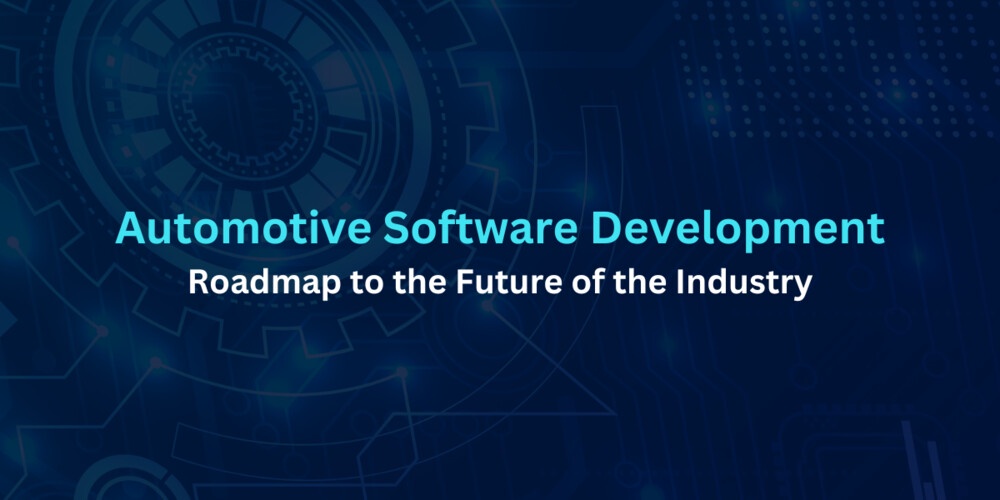The automotive industry is undergoing a transformative shift, driven by rapid advancements in software technology. From enhancing vehicle functionality to revolutionizing user experiences, cutting-edge software is reshaping how we interact with our vehicles and the road itself. This article delves into the key trends in custom software development for the automotive industry, spotlighting the groundbreaking technologies that are shaping both the current market and its future trajectory.
What is Automotive Software?
Automotive software refers to the software that is integrated into vehicles to enhance their functionality, safety, and user experience. This software can range from simple applications like infotainment systems to complex systems like autonomous driving and advanced driver-assistance systems (ADAS). The increasing reliance on software in vehicles has led to a significant growth in the automotive software market, which is expected to reach USD 116.62 billion by 2032, growing at a CAGR of 16.7%.
Key Trends in Automotive Software Development
The automotive software development landscape is characterized by several key trends that are driving innovation and growth in the industry. Some of the most significant trends include:
AI & Machine Learning in Automotive Software: Artificial Intelligence (AI) and Machine Learning (ML) are revolutionizing the automotive industry by enhancing vehicle functionality and user experience. AI-powered systems can analyze vast amounts of data to improve vehicle performance, safety, and efficiency.
Embedded Security: As vehicles become increasingly connected, cybersecurity has become a major concern. Automotive manufacturers are investing heavily in embedded security solutions to protect their vehicles from cyber threats.
Software-Defined Vehicles (SDVs): The concept of software-defined vehicles is revolutionizing the industry, leading to platformization—a trend where vehicles are built on a shared software platform. This shift allows for more efficient development cycles, easier updates, and customization options for consumers.
Electrification and Autonomous Driving: The shift towards electric and autonomous vehicles is driving significant growth in the automotive software market. Software plays a crucial role in the development of these technologies, enabling advanced features like advanced driver-assistance systems (ADAS) and autonomous driving capabilities.
Challenges in Automotive Software Development
Despite the significant growth and innovation in the automotive software market, there are several challenges that the industry faces. Some of the most significant challenges include:
Legacy System Integration: Many automotive manufacturers rely on older software frameworks that are deeply embedded into their operations. Integrating new, more advanced software solutions with these existing systems presents multiple challenges.
Cybersecurity: As vehicles become increasingly connected, cybersecurity has become a major concern. Automotive manufacturers are investing heavily in embedded security solutions to protect their vehicles from cyber threats.
Talent Acquisition and Retention: The automotive software development industry faces a critical shortage of skilled software developers, proficient in the nuances of automotive-specific technologies. This shortage drives up costs and extends recruitment cycles.
Regulatory Compliance: The automotive software development industry is subject to various regulations and standards, such as ISO 26262 for functional safety and ISO 21434 for security. Compliance with these regulations is crucial to ensure the safety and security of vehicles.
Conclusion
The automotive software development industry is poised for significant growth and innovation in the coming years. As the industry continues to evolve, it is essential for manufacturers to stay ahead of the curve by investing in cutting-edge technologies like AI, ML, and embedded security. Additionally, the industry must address the challenges it faces, including legacy system integration, cybersecurity, talent acquisition and retention, and regulatory compliance. By doing so, the industry can ensure a safe, secure, and enjoyable driving experience for consumers while also driving growth and profitability for manufacturers.


No comments yet